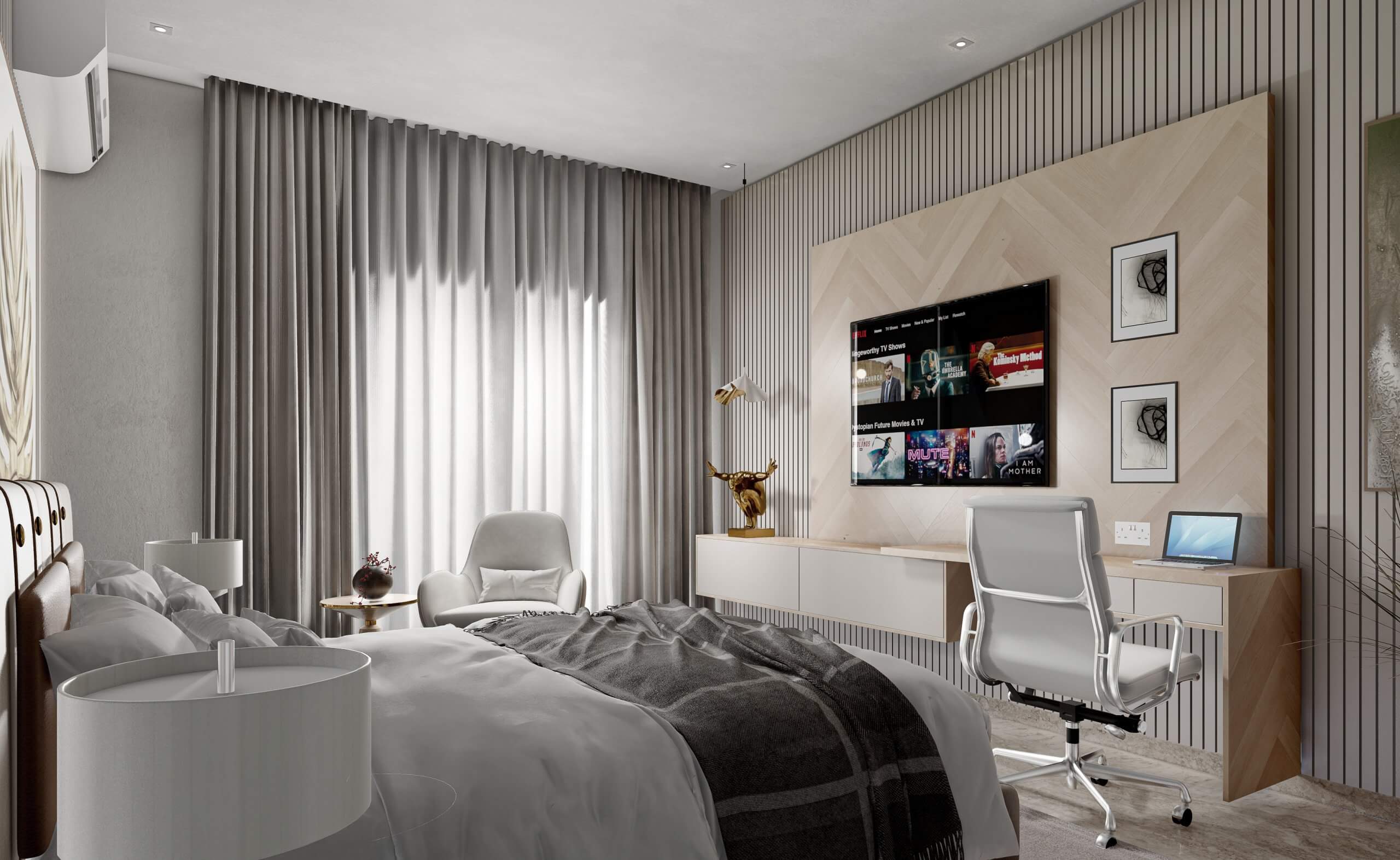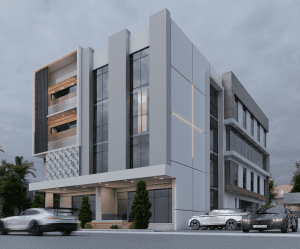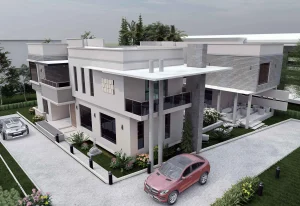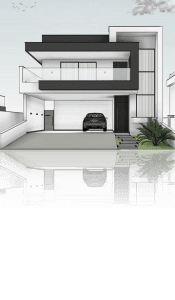ELEMENTS OF INTERIOR DESIGNS Everything in your home has a significant impact on your total wellbeing. Interior design is more psychological than physical, as most people assume it is all about aesthetics or a beautiful space. Interior design shapes our experience because it speaks to our minds and impacts every aspect of our lives. The design of your interior space can affect your health, safety, behavior, mood, appetite, feelings, emotions, productivity, etc.
In this blog post we’ll be exploring interior design elements and their functions in designing your dream home.
Welcome.
Interior Design Elements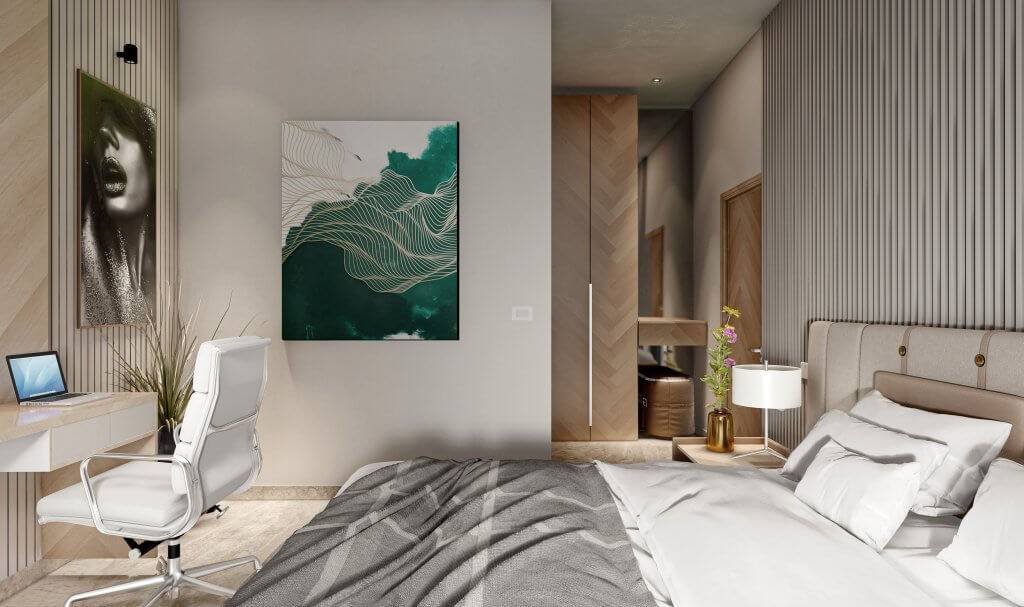

Interior design is the proper arrangement of design elements in a space- commercial and or residential. Design elements are components or fundamental parts used to create a design. There are seven elements of interior design which include :
- Color
- Form
- Light
- Line
- Pattern
- Texture
- Space
1. Color
Color is more than just an aesthetic choice — it can influence a space’s mood and overall ambience. For example, most people think of red as a “passionate” or “intense” hue. At the same time, blues and greens are usually perceived as “tranquil” or “soothing,” and yellow is often associated with words like “happy” and “optimistic.” Consider not only your visual preferences but also the energy or attitude you’re trying to cultivate when deciding on a color scheme for your room.
Color can make a room feel like a larger or smaller space than it actually is. For example, a brighter color, like white, can make a room feel wider, while darker colors, like black, make a room feel smaller. Think of color as your building blocks or foundation for designing the rest of your entire space. By picking out your color scheme ahead of time, you accomplish a specific task that will be an essential element throughout the room design process.
Check out our next post to learn how to make the most of color in interior designs
2. Form
Form is another term for shape, expressing the contours of artwork, furniture, or any other decorative object you could imagine. It refers to both the overall shape of the room and the décor. Form is all about balance and natural shapes. Furniture, lighting, and even flooring can take on two forms: natural shapes and geometric forms. Natural shapes are genuine and irregular, with curvy or abstract shapes. Geometric forms feature sharp, man-made lines and edges. While geometric shapes tend to be bold, natural shapes offer a softer look.
3. Light
Have you ever cringed at a photograph taken in bad lighting? Then you already know the power that lighting has to affect our perception!
Quality lighting is integral to any space, whether its sources are natural light or artificial lighting, or some combination of both. Mood lighting sets the tone in your space. Creating a balance of natural light and artificial light will ensure your space looks great all day. When choosing the lighting for your room, think about factors like the color of the light (cool blue or warm yellow?), the lighting’s intensity (bright for cooking or soft for reading?), and whether the light should be dimmable.
Check out our next post to learn more on lighting effects in interior design
4. Line
Think of line as the perimeter around a form or shape. For example, if you were to draw any object in the room, you would probably start with its outline.
Lines help create a direction in your space’s interior design and can help draw the eye to a focal point. Lines also bring structure. Different lines can influence your space. Vertical lines go up and down, while horizontal lines are side-to-side. Horizontal lines offer a sense of stability and are often found on furnishings like tables and chairs. Vertical lines are typically from doors, fireplaces, and windows. Interior designers say horizontal lines create a feeling of security, while vertical lines are expressive and bold.
5. Pattern
A pattern intentionally repeats forms, lines, or other interior design elements. Patterns add interest and excitement to a room. Patterns usually pop up on wallpaper or fabrics but can appear anywhere in the home, even in light or other design elements. Patterns add a visual texture and come in abstract, floral, or geometric shapes as well as any other style you can think of. While patterns add life and motion to a space, too many clashing patterns can start to look chaotic, so tread lightly when choosing your favorite prints.
6. Texture
Not to be confused with pattern, texture is how an object feels. This can mean how the object literally feels to the touch (physical texture) or the sense it gives when observing the object (visual texture). For example, you might say that a surface looks “weathered” or “vintage” without actually touching it, thanks to the creative use of texture.
Careful consideration of texture is especially important in parts of the home that you’re frequently in contact with, like your flooring. Our experts at Flooring America can help you find floors with the perfect, comfortable texture to start every day on the right foot.
7. Space
space is at the heart of virtually every design decision. Space’ refers to the distance between and around furniture and objects and their proportions within a room. Getting the balance within a room just right relies on using both ‘positive’ and ‘negative’ space just right.
There are two basic types of space to consider: 2-D space (which accounts for the length and width of a room) and 3-D space (which covers height). For example, only 2-D space is essential when considering carpets or rugs — but you’ll need to consider 3-D space before adding new shelving or furniture. Positive space is where the room’s objects – such as a sofa and armchairs – are positioned, while negative space refers to the gaps in between, and includes circulation space for navigating through the room, as well as the areas left open to prevent the room from feeling cluttered. Having a balance of positive and negative space is also very important.
Check out our next post to learn more on space functions in interior designing.
The 7 elements of design are designed to help you balance an interior scheme so that the finished look is aesthetically pleasing, as well as functional.

